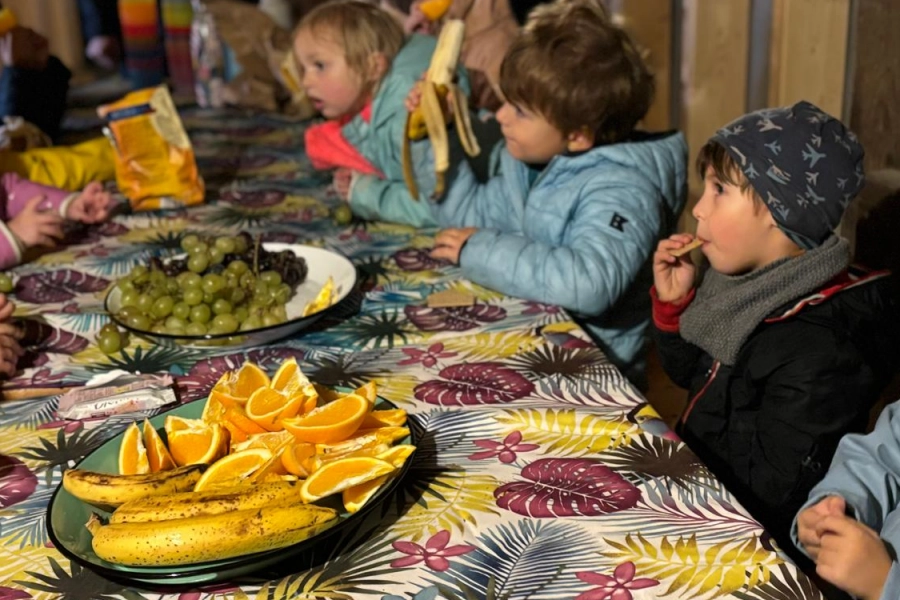


Nutrition: A Vital Pillar for Children's Success
Nutrition plays a crucial role in children's overall development and academic success. At school, approaches focused on holistic health and the integral development of children emphasise the importance of nutrition education.
These approaches aim primarily to strengthen students' abilities, motivation, and confidence so they can take care of themselves while respecting their personal values and available resources. By learning to make informed food choices, children can not only improve their well-being but also establish a solid foundation for academic success and their future.
Nutrition Education: Food Literacy
Food literacy, or the ability to understand and engage with food in all its forms, is an essential learning process. This goes far beyond knowing what to eat; it involves exploring the many roles food plays in our lives, relationships, and environment. To help children develop this skill, four key areas can be explored:
- Food systems: Understanding how food is grown, produced, and distributed.
- Food skills: Learning to recognise, plan, purchase, store, prepare, and eat food.
- Food context: Establishing a direct link between the food consumed, our needs, and available resources.
This learning extends beyond a specific age or period. It continues throughout life, enriched by experiences with people, places, and ideas. Through activities like discovering food at the preschool level or preparing simple meals in secondary school, nutrition education helps young people deepen their connection to food and build lasting habits.
A Child-Centered Approach
The goal of nutrition education is not to turn children into nutrition experts but to provide them with a solid and accessible foundation. It is crucial to adapt the content to their age and level of understanding. For instance, focusing on general concepts like the origin of food or the importance of hydration is more beneficial than introducing complex ideas like calorie counting or labeling foods as "good" or "bad."
By addressing topics that directly affect them or answer their questions, children’s interest and engagement are encouraged. Furthermore, regular activities throughout the school year are far more effective than initiatives concentrated over a short period. This not only helps anchor healthy eating habits but also balances the efforts of teachers and students.
Why Teach Nutrition at an Early Age?
International bilingual schools provide a particularly enriching framework for nutrition education. These schools welcome students from diverse cultural backgrounds, each bringing unique culinary traditions.
This presents an ideal opportunity for children to discover and respect others' dietary practices while learning the basics of nutrition. For instance, they can explore various cuisines such as Mediterranean, Asian, or vegetarian diets. This diversity nurtures their curiosity, broadens their horizons, and equips them to make suitable food choices in a globalised world.
International schools instill universal values such as sustainability and respect for the environment. Nutrition education can serve as a starting point for addressing critical issues like food waste, global food security, or the environmental impact of agriculture. Students learn to connect their food choices to global challenges, preparing them to become responsible citizens.
In a bilingual setting, children acquire nutrition knowledge in multiple languages, enhancing their vocabulary and understanding of concepts. This prepares them to thrive in a world where cultural and dietary diversity is the norm.
How to Teach Nutrition Effectively
Engage Through Fun Activities
Children learn better when they are engaged and having fun. Practical and interactive activities are therefore essential. Cooking workshops, educational games, quizzes, or creating posters on food groups capture their attention while reinforcing their knowledge.
For example, organising special days around balanced snacks allows children to prepare and share healthy meals while learning why certain foods benefit their health. These enjoyable moments leave a lasting impact on their understanding of food.
Integrate Nutrition into School Subjects
Nutrition education can be easily incorporated into various disciplines. In mathematics, children can learn to calculate portions or nutritional values. In science, they can explore the role of nutrients in the human body. In geography, they can discover the origins of food and the ecological impacts of its production.
Another essential aspect is teaching children to make ethical and responsible food choices. They can learn to prioritize local products, organic foods, or sustainably produced items. This also sensitises them to concepts like reducing food waste and the importance of conscious decision-making.
Involve Parents in the Educational Process
Nutrition education should not stop at the school door. Parents play a key role in establishing their children’s eating habits. By involving them in nutrition workshops or providing practical information through newsletters, the message conveyed at school is reinforced. Events like multicultural food days, where each family shares traditional dishes from their country of origin, offer children the chance to discover new flavors while learning about the benefits of different foods. These shared moments also strengthen the bond between the school and families.
Nutrition education in an international bilingual primary school goes far beyond simply imparting information about food. It prepares children to become informed citizens capable of making thoughtful and sustainable food choices. Through a tailored, interactive, and inclusive approach, students develop essential skills for their health, academic success, and future in an ever-evolving world.


